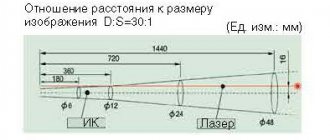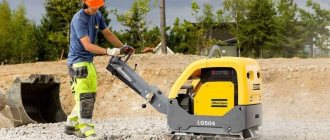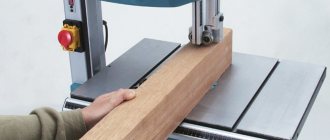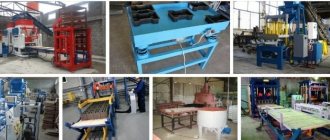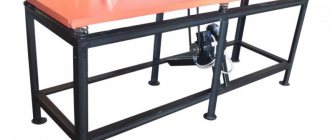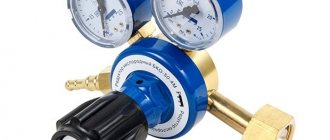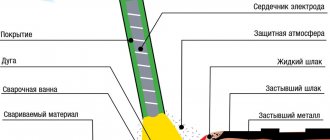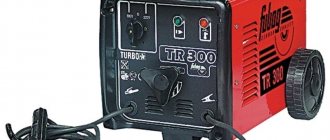Acetylene is a colorless flammable gas. This substance is a compound of carbon and oxygen resulting from a chemical reaction. Acetylene is used for welding metals, in the chemical industry, and also for the production of explosives.
This gas is completely synthetic, therefore, unlike methane, propane and other natural volatile substances, it can be prepared directly on site in the production process. To produce acetylene, generators are used in which this gas is formed by the reaction of calcium carbide with water.
Classification of acetylene generators
An acetylene generator is needed to produce acetylene gas. Such generators are especially needed where there is no acetylene production. They are divided into three categories:
- Performance. 1 cubic meter per hour in mobile devices, or 650 cubic meters per hour in stationary devices.
- Pressure force. There are low pressure devices. When the gas comes out, it is 15 kPa. And medium pressure devices. When acetylene comes out, it is 150 kPa. For higher pressures, only the cutter is used.
- Movement. Acetylene devices are portable and stationary. In mobile ones, due to their small size, gas is not produced above 3 cubic meters per hour.
Below are some types of units. The design of such devices must comply with GOST 519-78. Each type of device manufactured according to GOST has its own pros and cons.
Download GOST 30829-2002
Portable and small-sized medium-pressure units include the acetylene generator “Malysh” BAMZ. It is intended for the production of acetylene gas. Acetylene is used to power a torch or cutter. It is recommended to use for such work as cutting metal and welding trusses. It performed well in temperatures ranging from –30 to +40 °C.
The device requires attention to care for it. The adjustment of the shut-off-motor equipment is carried out by the gas welder himself. And the pressure level at the very beginning is set by the welder himself. Therefore, the welder must have such skills to cope with it.
Portable generator ASP-10
Acetylene generator ASP for gas welding equipment. This mobile device is used on construction sites and in household work. It produces acetylene up to 1.25 cubic meters per hour. These generators are produced only for oxy-fuel welding.
Video description
Gas welding: first steps.
Right and left welding methods
The flame moves from left to right in front of the filler rod Source youtu.be
Welding with acetylene and oxygen is carried out using left and right methods - this is not jargon at all, but a rule provided for and approved by GOST. If the burner moves from left to right (use your hands as a guide) in front of the filler rod, that is, the rod seems to push the torch, then this is the right method. With the left method, the action is performed in the opposite way - from right to left, where the welding rod seems to run away from the torch.
It cannot be said that the quality of the connection by one method is better than the other, but the right method is used for metal thicker than 5 mm. However, the left method is better from an aesthetic point of view - the welder constantly observes the seam and can achieve its constant width and thickness. And the left option allows the flame to spread across the metal, and this significantly reduces the risk of burning out the workpiece. The movement of the mouthpiece is carried out strictly along one line. But the rod not only moves straight, but also makes oscillatory movements to the sides - this allows you to create a more durable seam.
Device design for gas welding
The simplest device is a dry type acetylene production device. The dry type generator consists of components that are described below:
- Container with carbide. It is equipped with a tight-fitting lid.
- Cylinder body. It is filled fifty percent with water. The space at the top is left for gas to form.
- Dispenser-feeder. He feeds carbide into the cylinder from time to time.
- Anti-corrosion steel grille. It is located at the bottom of the cylinder. This is where carbide and water are mixed.
- Sludge collector.
- Check valve. It supplies gas to the hose for welding or cutting and other activities.
- Mechanical pressure meter or manometer.
- Number of the plant that manufactured it.
- Year of manufacture of the generator.
- The pressure at which it operates.
- Amount of loaded carbide. Indicated in kilograms.
- Temperature limit. Conditions under which the generator will operate properly.
- Brand of cylinder.
In general, refueling of such generators occurs as follows. Pour water through the neck of the device. When it enters the overflow tube, it flows into the washer. The overflow plug is designed to control filling. Calcium carbide is loaded into a special basket. It is pressed with a special lid with a membrane. It is tightened with a screw.
Acetylene generator device
An important part of any such gas generator is the safety plug. It protects against flames during a backfire. It also prevents air from entering the device from the working part of the unit. Thus, it protects the cylinder from explosion.
When a backfire occurs, a fire is formed inside the torch, and it spreads along the hose into the cylinder. After the impact, the burning gas returns to the hose. If there is no valve to prevent the entry of burning gas, it enters the working unit.
This happens when gas comes out slower than it burns. In addition, negative consequences occur when the mouthpiece becomes filled with slag.
Check valves are divided into liquid, or water-filled, and dry, that is, mechanical. Valves in which water plays a key role are manufactured for ASP 10 acetylene generators.
The unit has the shape of a cylinder. It has an upper and lower bottom. The bottom bottom has a check valve. It is made in the form of a container and a rubberized valve with a cap. The cap prevents the check valve from rising.
At the top of such a shutter there is a flame-blocking device, and at the bottom there is a divider. This cylinder is filled with water. And the gas passes through the tube and goes up through the check valve. There it passes through the reflector and goes into the cutter or burner through a special tap.
When a backfire occurs, the check valve is activated. It falls down and prevents acetylene from penetrating from the generator into the valve.
Homemade generator at work
The fire is extinguished by releasing water. Due to the generated pressure, the water is thrown upward. After the check valve is activated, the liquid must be replenished to the level of the flow valve. If there is not enough water, gas will begin to enter the atmosphere through the valve.
The design of the acetylene generator for the “wet process” of acetylene production has been slightly modified. A container with carbide is placed at the bottom of the cylinder. It is supplied with water from time to time. Water gets there through a retort. The top of the cylinder serves to collect gas. Acetylene rises through the pipe through a layer of water directly to the sampling point. By moving upward, it displaces water downward. Thus, there is a constant supply of carbide and gas formation. This method is considered the best.
In mixed type generators, gas filling occurs as follows. A displacer has been added to the “wet process” apparatus. It reduces the level of water formation when gas exits, thereby slowing down the process of acetylene formation. When the pressure in the cylinder decreases, the water level rises. Water again enters the acetylene formation chambers.
The disadvantage of such a device is that if it is heavily clogged, the valve shifts. As a result, this displacement cannot be restored to its normal position. After this, pressure losses begin to occur. The container has to be shaken constantly.
“Water on carbide” according to the “dry process” principle
The essence of the operation of such generators is that there is a drive drum with carbide in the gaseous chamber. There is also a semi-automatic carbide feeding system. It is loaded into the drum through special hatches. Water is also added here. In this case, it is extremely important to maintain the correct dosage of liquid. Its amount should be exactly twice as much as is necessary for the decomposition of carbide. Since a chemical reaction produces a lot of heat, excess water evaporates and does not need to be removed. As for the slaked lime, it falls through the bottom grate of the drum and is then removed.
Advantages and limitations of acetylene generator designs
The design of the acetylene generator “Baby” is considered the best. This device is compact and provides precise consumption of flammable materials. It consistently holds the required pressure without deviations. The required pressure is set manually. According to its intended purpose, it belongs to dry-type mobile generators.
Mobile generator BAKS-1
Combined type devices are characterized by heavy slagging. With all the excellent characteristics that they show, if the slag is not detected in time, the partition will move towards the displacer. And this will lead to a loss of acetylene pressure at the outlet.
Gas welding technology
As already mentioned, welding with acetylene and technical oxygen is carried out by mixing these gases (C2H2 burns well, and O2 ideally supports combustion) and ignition to heat the surfaces being processed. Oxygen here essentially performs two functions:
- The C2H2 formed in the generator has low pressure at the outlet of the tank, but it is picked up by a stream of oxygen and carried into the burner.
- When the welder ignites the mixture at the nozzle, he has the opportunity to regulate the power of the torch using a thumb valve, which is responsible for supplying oxygen that supports the combustion process.
You can buy such a container for gas welding at a hardware store Source all.biz
Operating principle of acetylene generators
There are three principles of operation of an acetylene generator. This is water into carbide, carbide into water, displacing water.
The best devices for carbide decomposition include generators that operate using the “carbide into water” system. It completely decomposes calcium carbide. Provides good conditions for gas flushing. The disadvantage of such devices is their large dimensions and large amount of waste. They also require a large amount of water during operation.
Next come the generators, which operate using the “water to carbide” system. Their design is much simplified. This operating principle is also called the “wet process”. Thanks to this process, carbide can be used in different granulations. This method is used in mobile generators. The volume of gas produced is 3 cubic meters per hour.
One of the disadvantages of such generators is overheating of the gas in the reaction zone. Also, calcium carbide does not decompose completely.
The last method of operation follows the operating principle of acetylene generators with a combined system. The method is used in mobile generators of low and medium pressure. The maximum gas release capacity is 10 cubic meters per hour.
Generator operating on the principle of water displacement
Although acetylene generators that operate using a water displacement system are famous for their stability, there are still disadvantages. One of the disadvantages is overheating after stopping gas extraction.
How to make your own hydrogen welding machine
Hydrogen welding is useful to any craftsman. The hydrogen cutter is not a cheap piece of equipment. In addition, commercially available machines are often unsuitable for soldering small parts, especially jewelry.
The way out of this situation is to make atomic-hydrogen welding yourself. All the parts necessary to create such a device can be easily purchased at any hardware store. So, let's look at how to do this at home.
Main capacity
Installation for welding with hydrogen.
The hydrogen welding machine operates as a result of the combustion of hydrogen, due to the dissociation of an aqueous alkali solution. This process is carried out in a container for which a half-liter jar is perfect. It must be closed with a plastic cover with two holes made to remove contacts from the electrodes.
All terminals must be tightly sealed. Moment glue is suitable for these purposes.
Four-centimeter strips of stainless steel can be used as electrodes. For the best performance of a welding machine, the entire volume of liquid must be used.
To do this, the plates are drilled along the upper and lower edges and connected to each other with dielectric pins. Terminals are made on the resulting block: two negatives located at the edges, and a pole between them.
Each terminal is bent and fixed to the container with a bolt. The terminals from the power source will be attached to these bolts.
The container must be filled with a syringe with working fluid through the gas outlet fitting. The electrolyte is an 8-10% mixture of sodium hydroxide in distilled water. When the electrolyzer is operating, the temperature of the working liquid of the alkaline solution usually does not exceed 80 °C.
The second vessel acts as a hydrodispenser. In it, gases are saturated with vapors of flammable substances. Then the resulting mixture is sent to a third container filled with ordinary water. It acts as a shutter for the release of gases.
An ordinary medical needle can be used as a nozzle through which oxygen, hydrogen and flammable substances will come out.
Current source for atomic hydrogen welding
A regular 12 volt battery can be used as a power source. This option is perfect for working with metal of a fixed thickness.
Its disadvantage is the inability to control the burner flame strength, since its performance is determined by the production of hydrogen and oxygen, which depends on the current strength.
Choosing a charger for car batteries will be more preferable. To work with thin metal plates or jewelry, charging can be set to 3 volts.
Hydrogen welding can be powered with oxygen from a regular 220 V network, which allows you to use this device at home.
Exchange camera
Schematic diagram of a hydrogen welding apparatus. To select hydrogen and oxygen supplied to the burner, another container is used - an exchange chamber. You need to make 3 holes inside it:
- for refilling with working fluid;
- at the bottom there is a fitting for supplying working fluid to the main tank;
- fitting for supplying the gas mixture to the nozzle.
The design of the additional container must also be carefully sealed. Gases and liquids should not leak through the hydrogen seals of the hydrogen generator. This is also solved with the help of "Moment".
Making a burner
To make a burner, you can use a regular rubber hose. It is through this that hydrogen and oxygen will be transported from the exchange chamber to the nozzle. You can use a needle from a syringe or dropper as a nozzle. The latter will be a more preferable choice, since the walls of this needle are thicker.
The hose must be tightly secured to the exchange chamber fitting and the needle base. This is achieved using clamps. After completing all operations to assemble the device, you can begin testing it.
Requirements for the placement of acetylene generators
Such generators are characterized by an increased fire hazard. Therefore, in order to prevent an explosion, it is necessary to follow a number of rules for stationary and mobile gas welding stations.
- Work with generators only at temperatures specified in the manual for operating the device or on the cylinder itself. For non-mobile persons – from +5 to –40. For portable ones - from minus twenty-five to plus forty degrees Celsius.
- During welding, keep an eye on the quality of the gearbox. It can work differently during gas pressure surges.
- Be sure to check for sparks. It is not recommended to use generators made of steel. Made of bronze will prevent the formation of sparks.
- The employee must monitor the operation of the generator. Recognize in time that the device is sucking air from the atmosphere and prevent this possibility in time.
- The device can operate at pressures from 20 percent to 110 percent above the level designated by the manufacturer.
- An acetylene generator produces as much acetylene as a welded one consumes.
- The device closes perfectly hermetically. There is sufficient volume in the gas collector for the formation of acetylene. Gas should not pass inside the room where the welding process is taking place or outside.
- The design of the device must be well cooled. The maximum temperature for the liquid should be set at eighty degrees Celsius in the area where acetylene is produced, and the gas itself at 115.
- It is not recommended to remove the check valve.
- The size and weight of portable devices should be kept to a minimum.
Safety precautions during welding work
Portable units should be used in ideally ventilated rooms, or in an open construction area under a canopy. The distance between welding and the device itself should be fifteen meters. Under no circumstances is it recommended to use an acetylene unit near an open flame.
Collection of rules for the mechanism of the unit and welding
Acetylene gas is an explosive substance. Mixing with oxygen it creates explosive mixtures. Any gas welder must know by heart the safety requirements when working with acetylene gas. He must memorize the safety manual when welding using an acetylene unit.
- The container is half filled with water until the liquid reaches the level of the special tap.
- Wash the plug and container well and dry.
- Add the substance to create acetylene gas as written in the manual. Also follow the granulation prescribed in the rules.
- Before the initial start-up of the gas welding tool, the gas mixed with O2 is released into the atmosphere.
- In winter, during lunch breaks and smoke breaks, the water in the cylinders should be above zero. In winter, generators are insulated. Typically, saline solutions are used to prevent the liquids in the apparatus from freezing. But they spoil the container faster, as the salt water begins to eat away at the metal walls of the container. Most often, ethylene glycol or glycerin is used for these purposes. It is mixed like this - two liters of glycerin with one liter of water. This mixture allows the liquid not to freeze at -76 degrees Celsius.
- In winter, cylinders should also be packed in special insulated booths to prevent the device and its interior from freezing.
- It is also not recommended to place sludge near the device. It must be carried into sludge pits dug for waste.
- The slaked lime that remains after dissolving calcium carbide must also be removed in time so that the inlets and outlets of the cylinder do not become slagged. The formation of slag leads to cylinder failure and the possibility of an explosion.
- During fairly long breaks, it is better to drain the water from the cylinder. It is especially recommended to do this on winter days.
- The generator needs maintenance every 90 days. To do this, you need to disassemble the water seal, the gas outlet tube, and the gas supply tube.
- All work on disassembling and cleaning the device should be carried out outdoors.
- Once a year, an inspection should be carried out by the production administration. Then you need to draw up a special verification document.
- Under no circumstances should you light matches or go with an open flame to the device itself or to the slaked lime left after work. If the remaining gas is released, an explosion will occur.
- Do not leave a running generator unattended.
- After welding, be sure to remove all sludge from it and wash it thoroughly.
- A passport and manual are prescribed for each acetylene unit. The chief production engineer approves them.
- Portable acetylene generators should only be used in open areas.
- Do not operate portable devices while tilted or near an oxygen cylinder.
- Thoroughly ventilate the space where the generator is installed. It is not recommended to work in confined spaces with an acetylene generator.
- The device must function stably.
If all rules are followed, the device will function for a long time without causing problems. If the foreman constantly checks the work of gas welders and their compliance with safety rules at work, no disasters will occur due to the foreman’s oversight.
GENERAL OCCUPATIONAL SAFETY REQUIREMENTS
1.1. This instruction applies to workers performing maintenance work on portable acetylene generators designed to produce acetylene gas from calcium carbide and water to supply acetylene to gas-flame metal processing equipment. 1.2. Persons at least 18 years of age who have undergone a medical examination and technical training in this specialty, passed an exam and have a certificate for the right to work on servicing portable acetylene generators are allowed to work on servicing a portable generator. 1.3. Permission to work is issued by order of the enterprise after introductory and initial workplace safety briefings, training in safe work methods, on-the-job training and successful testing of knowledge of labor protection requirements. 1.4. At least once every 3 months, the employee is required to undergo repeated training on labor protection. At least once every 12 months, a knowledge test is carried out by a specially created commission chaired by an employee appointed by order of the head of the enterprise. 1.5. Workers must comply with the work and rest schedule established by the administration. 1.6. The production of acetylene in portable generators falls into the category of explosive and hazardous industries. 1.7. Failure to comply with labor protection and fire safety rules, as well as technical regulations, can lead to accidents. Therefore, workers are required to be especially attentive and have a clear knowledge of safe work practices. 1.8. Workers performing maintenance work on portable acetylene generators may be exposed to the following hazardous and harmful production factors: - acetylene; — gaseous toxic impurities in acetylene: hydrogen sulfide and hydrogen phosphorous; - aerosols generated during welding or cutting. 1.9. In accordance with the Standard Industry Standards, the welder is provided with free work clothing, safety footwear and other personal protective equipment (PPE): - rubber and canvas gloves; — rubber aprons; — respirators; — closed-type safety glasses with lenses having the appropriate light filter density, or shields. 1.10. An employee engaged in servicing portable acetylene generators, in addition to these Instructions, should know: - an emergency response plan at his workplace; — operating instructions for the acetylene generator; — instructions for emergency stop of the acetylene generator; — fire safety instructions at your workplace; — rules for using PPE (respirators, shields, goggles, etc.); — rules for providing first aid in case of accidents; — rules of personal hygiene. 1.11. If a welder is injured, the shift supervisor or station manager should be reported immediately. 1.12. Employees are responsible for violating the requirements of this Instruction in accordance with the current legislation of the Russian Federation.
Is it possible to assemble such a device yourself?
An acetylene generator can be assembled at home with your own hands. To do this we will need the following tools and materials:
- Steel body.
- Partition.
- Water seal.
- Carbide.
- Water.
- A device in the form of a tube inside a cylinder for removing gas.
- Cutter or torch.
The main thing is to strictly follow the rules for making a cylinder. Otherwise, acetylene vapor will combine with air and a strong explosive mixture will form.
A steel cylinder is used. Using a partition, which must be installed slightly lower from the center of the cylinder, divide it into two parts. One part of this cylinder is filled with ordinary water, and the other is filled with calcium carbide, from which acetylene gas will then be obtained. Water will flow through a dropper into the other half of the steel container and drip onto the calcium carbide. Mixing with water will cause a chemical reaction. As a result, acetylene gas is formed, which enters the outlet through a special tube, and the slag is sorted to the side.
Everything seems simple and great. But this is only what it seems at first glance. Pressure surges must be taken into account. This reaction is not constant. Sometimes it proceeds more slowly, other times faster. Therefore, you can simply fly into the air, thanks to a homemade generator. Because he was not certified.
Therefore, it is recommended not to make homemade generators to create acetylene. In this way, you will protect yourself and those who will be with you at this time.
Acetylene - why can’t you do without it?
Despite the danger of spontaneous combustion and explosion, acetylene is widely popular in the construction industry. This is exactly the case when irreplaceable materials do exist - only acetylene, produced on an industrial scale, is capable of giving a combustion temperature of up to 3100 ° C, which no other gas can boast of. These indicators are in great demand in cutting and welding ferrous metals - at such a high temperature it is not a problem to melt even a thick sheet of steel.
In addition to its main purpose, acetylene is used in the organic synthesis of aldehyde, synthetic rubbers, acetic acid and polyvinyl chloride, the same one from which PVC panels are made. For operation and storage, gas is pumped into cylinders, which are traditionally painted gray-silver or white, over which they are marked with red paint. For safety, the cylinder is filled with a neutral porous substance, which is saturated with acetone with acetylene gas dissolved in it.
It is important to know that silver and copper, as well as alloys with their high content, are not used with acetylene, since explosive compounds are formed as a result of the chemical reaction

